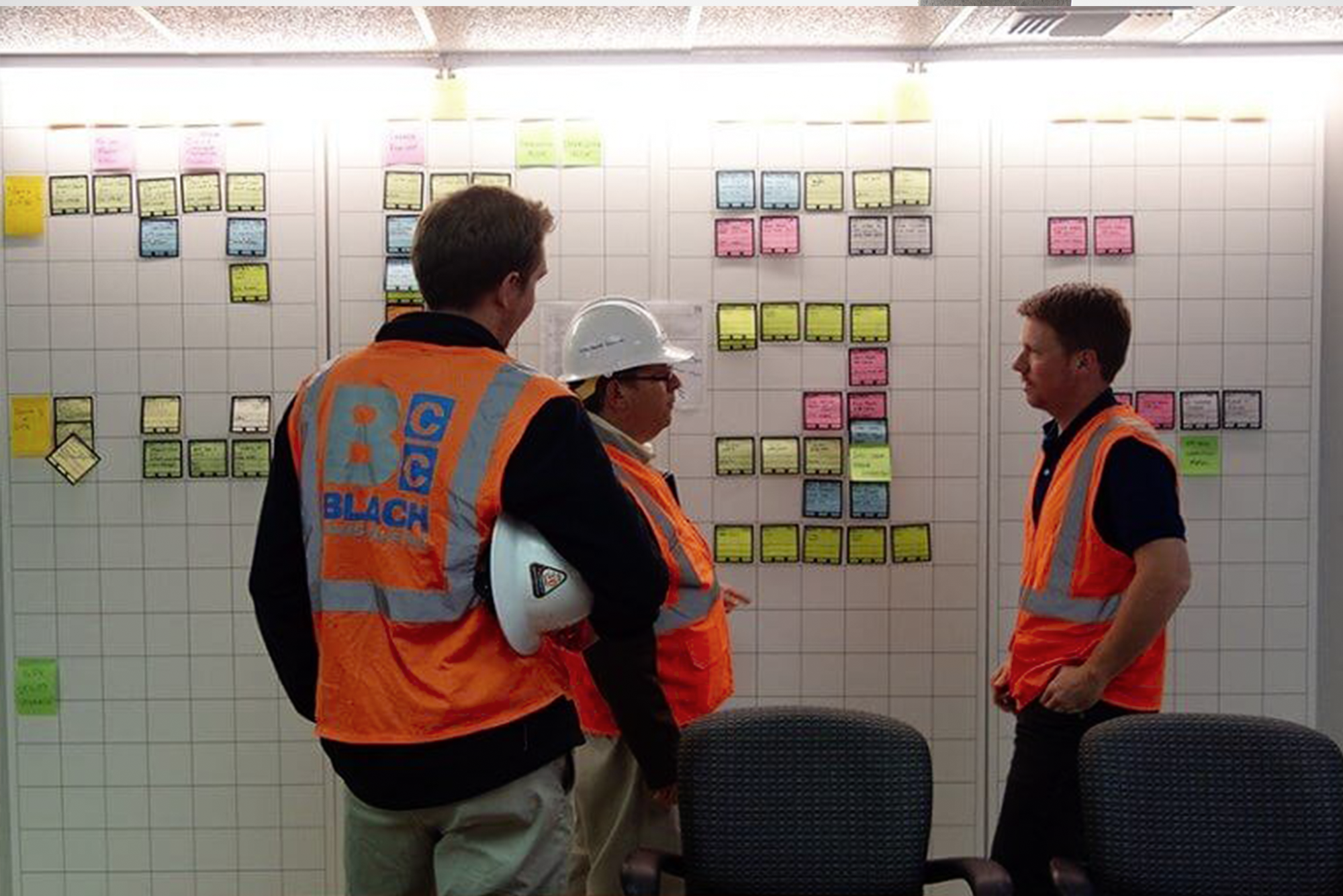In any project, creating a seamless workflow is essential to ensure continuous and consistent processes while supporting productivity and minimising waste. This must be ingrained in your construction management plan to ensure efficiency and predictability.
Enters takt planning, a lean construction methodology that focuses on creating project zones and allocating time-based tasks to ensure a steady, continuous workflow. This allows project managers to allocate balanced workloads to teams to ensure efficiency and productivity.
Let’s explore the takt plan and how it can support your construction project planning.
Free eBook: Quick guide to Lean practices for construction professionals
History and evolution of takt planning
The plan is inspired by the German word Takt, which translates to rhythm, cadence, or cycle. It relates to another German word Taktzeit, which translates to interval or cycle time, and it was used to help keep time in music. The word “Zeit” means time.
Its use in the AEC industry dates back over 100 years ago, when German automotive engineers visited Japan’s Toyota production facility and introduced the concept to them. It’s said that Taiichi Ohno, who was then Toyota’s head of production, was tasked with improving productivity and implementing flow production.
Taiichi applied the concept within the Toyota Production System (TPS), fuelling its popularity as part of the lean principles.
Benefits of takt planning for construction
Research has proven that takt planning is an effective tool for resource and schedule planning in construction.
- Clear work scope: The plan creates a realistic workflow and rhythm tailored to each task or process. By ensuring the correct size and sequence for activities, it gives a clear idea of the work ahead.
- Improved standardisation: It enhances focus and standardises the forecasting process, simplifying the construction process. This supports efficient executions, leading to better deliveries and improved construction quality.
- Enhanced collaboration: A talk plan defines the scope of work for crews, allowing them to know what they will work on next. This common understanding of the roles and scope of work fuels seamless collaboration.
More importantly, takt planning can help construction firms reduce costs, improve client satisfaction levels, and enhance operational efficiency. It can help managers understand where to change processes or invest in more equipment and tools to minimise project delays.
More to read: 5 steps to prevent common construction schedule delays
The role of takt planning in lean construction
The goal of lean construction is to minimise waste at every opportunity. It takes an iterative approach, where tasks like planning, design, and building are completed in smaller chunks. The approach is all about collaboration, with all stakeholders participating in the process.
Takt planning is a key concept in lean construction – it maximises the available time for each task or phase to allow teams to complete more activities with less. By dividing a project into zones and allocating time-based tasks, takt planning ensures a balanced workload to minimize waste and improve efficiency.
Ideally, takt planning prioritises all the principles of lean construction, such as operational efficiency and waste reduction, to ensure successful project outcomes.
You might also like: 7 ideas to make implementing lean more successful for your construction projects

How to develop a takt plan
Developing a takt plan is a crucial aspect of efficient construction project management. It helps streamline workflows, allocate tasks effectively, and minimise waste. To create a successful takt plan, you need to follow a systematic approach. In this step-by-step guide, we’ll walk you through the process, from understanding time constraints to optimising project phases. By the end, you’ll have the tools to enhance project efficiency and ensure successful outcomes.
Now, let’s delve into the steps:
1. Determine time constraints
Start by identifying the time constraints for your project. This means knowing your project’s start and end dates. Understanding these constraints is crucial for effective takt planning.
2. Study project drawings
Take the time to thoroughly review and understand your project drawings. This step is essential for gaining insight into the flow and sequence of tasks. It will help you in creating a smooth workflow.
3. Identify preliminary takt zones
Define preliminary takt zones, which can also be referred to as sequences or production areas. This step is vital for highlighting the specific work that will be scheduled based on takt time.
4. Determine preliminary takt time
Calculate the preliminary takt time. If you’re unsure, you can make an educated estimate, such as setting it at five days. This time interval will guide your scheduling.
5. Plan the representative zone
Develop a plan for the representative zone. This includes creating the takt sequence and takt phase. This step allows you to define the detailed scheduling of work within your takt plan.
6. Optimise phases and network
Once you have preliminary takt zones, takt time, and sequence in place, the next step is to optimize your project phases. Ensure that they align with the takt plan, and network all phases together to create a cohesive and efficient construction schedule.
By following these steps, you can successfully develop a takt plan for your construction project, ensuring better workflow management and project efficiency.
Comparison of takt planning with techniques
Takt planning stands in stark contrast to traditional construction planning methods. While conventional approaches often grapple with uneven workloads and unpredictability, takt planning offers a more structured and consistent approach. Let’s take the example of the Watershed method, a traditional approach that frequently faces challenges such as imbalanced work distribution and the emergence of bottlenecks. These bottlenecks can lead to significant project delays and hinder overall productivity.
In contrast, takt planning strictly adheres to the principles of lean construction, focusing on creating balanced and efficient workflows. This alignment with lean construction’s core policies ensures not only the maximisation of efficiency but also the minimisation of waste in every phase of the project. Traditional methods, on the other hand, often rely heavily on estimates, which can lead to operational inefficiencies, and they may not emphasize waste reduction and continuous improvement as vigorously as takt planning does.
The key takeaway here is that takt planning is a modern, lean-inspired methodology that prioritizes a well-structured, balanced workflow, ultimately delivering more efficient and predictable project outcomes compared to traditional construction planning techniques.
Further reading: 5 Lean construction benefits (and how to get them)
Streamline your project management and planning
Time and cost optimizations are becoming crucial to the success of every construction project. This is particularly important when working on multi-storey projects, which tend to have multiple phases and crews. At LetsBuild, we make this easy with our LB Coordination tool.
Our tool allows you to work in lean zones, start your crews on-site when and where they can and overlap safely in zones. It also allows you to leverage parallel Lines of Balance to keep subcontractors focused on their tasks and minimise repetitive tasks in multi-storey projects.
Book a demo or contact us today to discover how our tool can support takt planning and lean construction to ensure successful outcomes.




